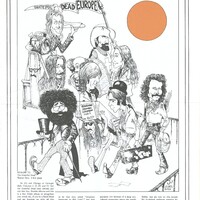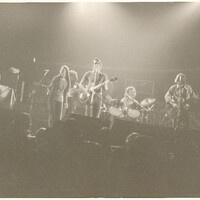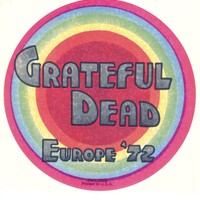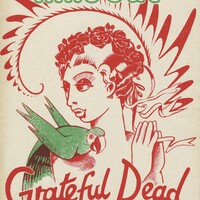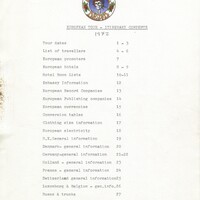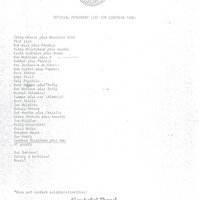Europe '72
Tour History
Europe ’72 was important for other reasons, too. It represented an experiment in applying their philosophy of shaping their business practices in accordance with their artistic philosophy, and that meant traveling with their extended family, bringing along wives, girlfriends, children and friends as well as a full crew complement. This ensured that they had the inspiration, comfort, and expertise necessary to successfully create, and record, their legendary improvisational alchemy.
In order to pay for the trip, the Dead arranged to tape every show with a 16-track mobile recording truck. The resulting album, a three-LP release entitled Europe ’72, captured some of their finest playing and demonstrated the degree to which they could move seamlessly between their fire-breathing Live/Dead-era exploratory guise and their more roots-oriented American Beauty/Workingman’s Dead persona. Those tapes would later make possible several additional releases, culminating in the mammoth complete tour boxed set released in 2011.
The tour also represented a swan song for their first front man, Ron “Pigpen” McKernan, who largely relinquished keyboard duties for the tour to newcomer Keith Godchaux. McKernan performed only one more time with the band after their return to the states before his tragic death at age 27 only a few months later, on 8 March 1973. Europe ’72 provided a moving epitaph for him in the form of three new songs by McKernan, his last recorded efforts with the band.
Those originals are part of the tour’s appeal for fans, but the caliber of the performances is what cemented Europe ’72’s place in the band’s history. Garcia complained afterwards that the pacing had been wrong, with too much work for it to be a real vacation and too much vacation for it to be a truly successful musical experience, but that may help explain the marvelous range of emotion and musical textures heard on the recordings. The energy of an enthusiastic (and well-rested) band, coupled with the leisurely determination to explore, mark the music the Dead performed in Europe as one of the peaks in their career. Overall, there is warmth and feel to the Europe ’72 shows that explain the eventual decision to release them in toto.
